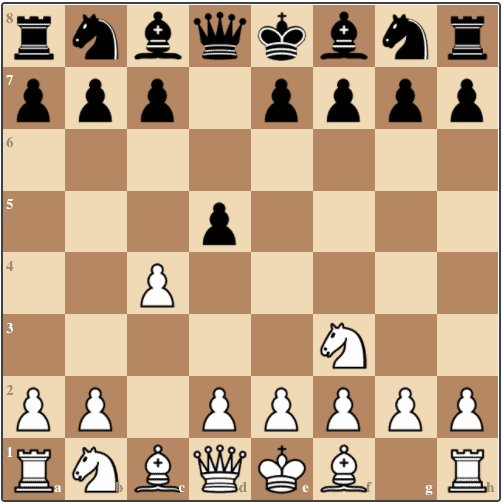You must have a basis for thinking constructively.
Hierarchies of Thought
Arrange your thoughts in a hierarchical structure.
You start at level one, sorting out the immediate tactics of the position. If that reveals no clearly best move, you move up to level two, where creative thought suggest moves that may help with strategic objectives. Employ the scanning technique to cover every piece and pawn on the board (you could do the same for your opponent). Any interesting moves are sent to level three for a tactical health check (blunder-check).
Along with the blunder-check the moves that go to level three are looked at in more detail. For it is here we access the strategic gains that may be made with tactical means. And when those are established , discoveries may lead to a modification of our entire strategy.
-----------------------------------------------------------------
Level One...Tactics
What did the Opponent's Last Move Change about the Position?
Checks, Captures, Threats (CCT)
(After your opponent's last move check for tactics, threats and captures as your tactical sight is at its height in the first minute you look at the new position.)
Examine the most forcing order of moves; look at all of the possible Checks, Captures and Threats - both yours and your opponent's - to avoid eliminating possible good candidate moves and to identify potential tactical threats.
Calculate until there are no more forcing moves.
Are there new possibilities in the position for tactical or positional exploitation?
Look for overlapping ideas that can be applied from different variations (tactical themes and key in-between moves such as checks and threats).
What was the previous function of the piece your opponent just moved?
When playing a piece in reply, some squares on the board become defended or attacked, but other squares become unprotected. These changes are a source of many blunders or oversights during practical chess; by seeing such consequences you can avoid many errors of your own and benefit from those of your opponent.
Your strongest move often takes advantage of your opponent's last move.
----------------------------------------------------------------------
Level Two...Strategy (Positional Assessment)
1) Browse the static feature of the position
1) What is the material balance?
2) Are there any direct threats?
3) How is the safety of both kings?
4) Pawn Structure : What can we read from the current pawn formation?
a) Where are the open lines and diagonals?
b) Are there any weak or strong squares?
c) Which pawns are weak?
d) Where are the appropriate pawn levers and how would they impact the position on the board.
e) Who is controlling the center?
f) Who has more space and where on the board does he have it?
5) Which pieces are active and which are not? (the queens, rooks, bishops and knights)
6) Potential endgame advantages.,
2) Scanning
Scanning Technique
The "scanning technique" teaches us the importance of the "searching" quality that is required to be a good player. We are constantly searching for the best move, even after we spot moves that appear "logical" or "forced".
Once we have established that our move is not forced, we first need to survey the options available to us. For this, I strongly suggest employing the "scanning technique" to make a list of possible good-looking moves, what we call "candidate moves".
To employ the scanning technique, first scan the board from the a-file to the h-file, starting with the pieces and then the pawns. Try to find all possible good-looking moves for each piece and make a mental list. Then do the same for all the pawns. Now we have a complete list of all the candidate moves in the position. We can then proceed to follow any of the approaches below:
- Remove bad-looking moves from the list by process of elimination;
- Analyze the most forcing continuations (checks, captures, threats and pawn breaks) to see if they work; or
- Analyze the move you like most and if it looks like it won't work, follow the process of elimination to discard bad ideas or search for the most forcing continuation.
--------------------------------------------------------------------
Level Three...The interplay between strategy and tactics
Along with the blunder-check, It is here we access the strategic gains that may be made with tactical means thus altering our entire strategy.
-----------------------------------------------------------------------------------------


No comments:
Post a Comment